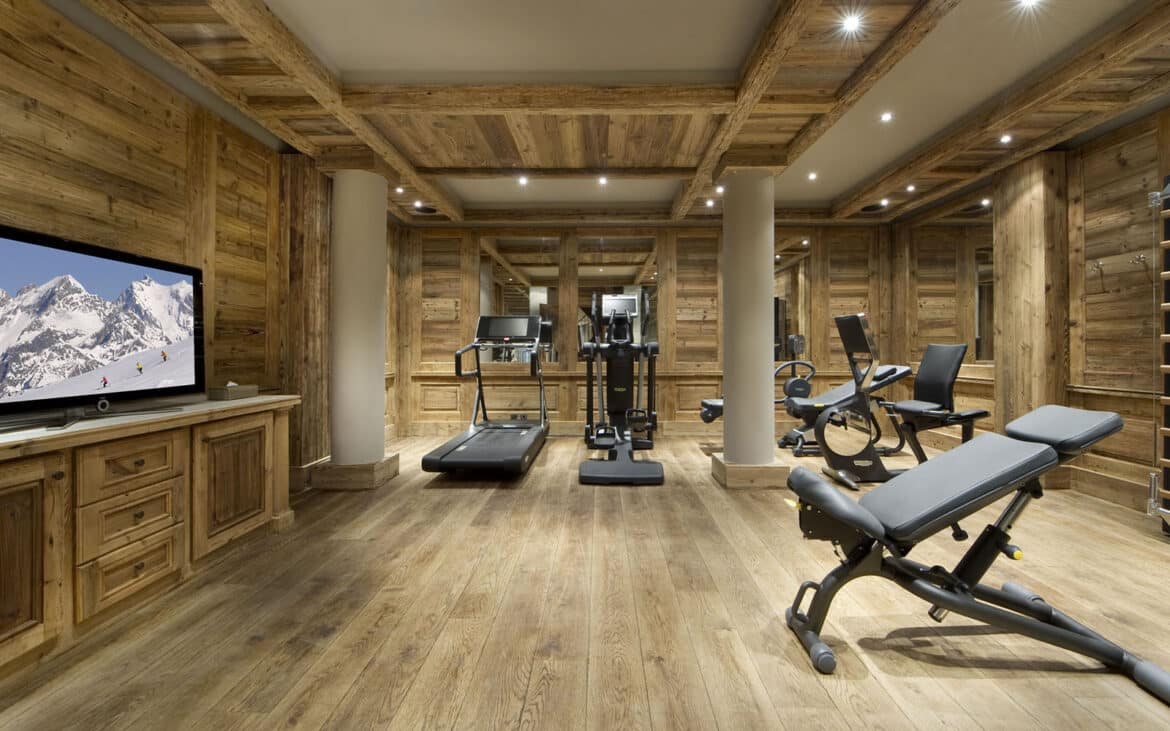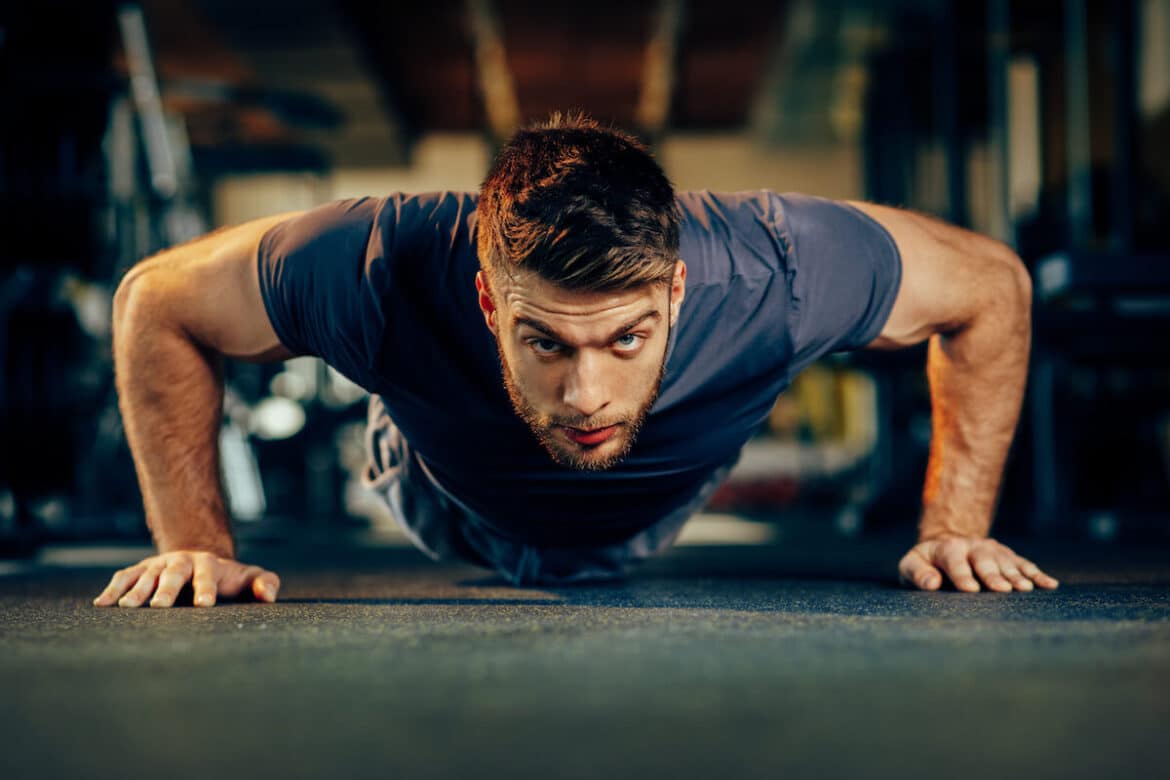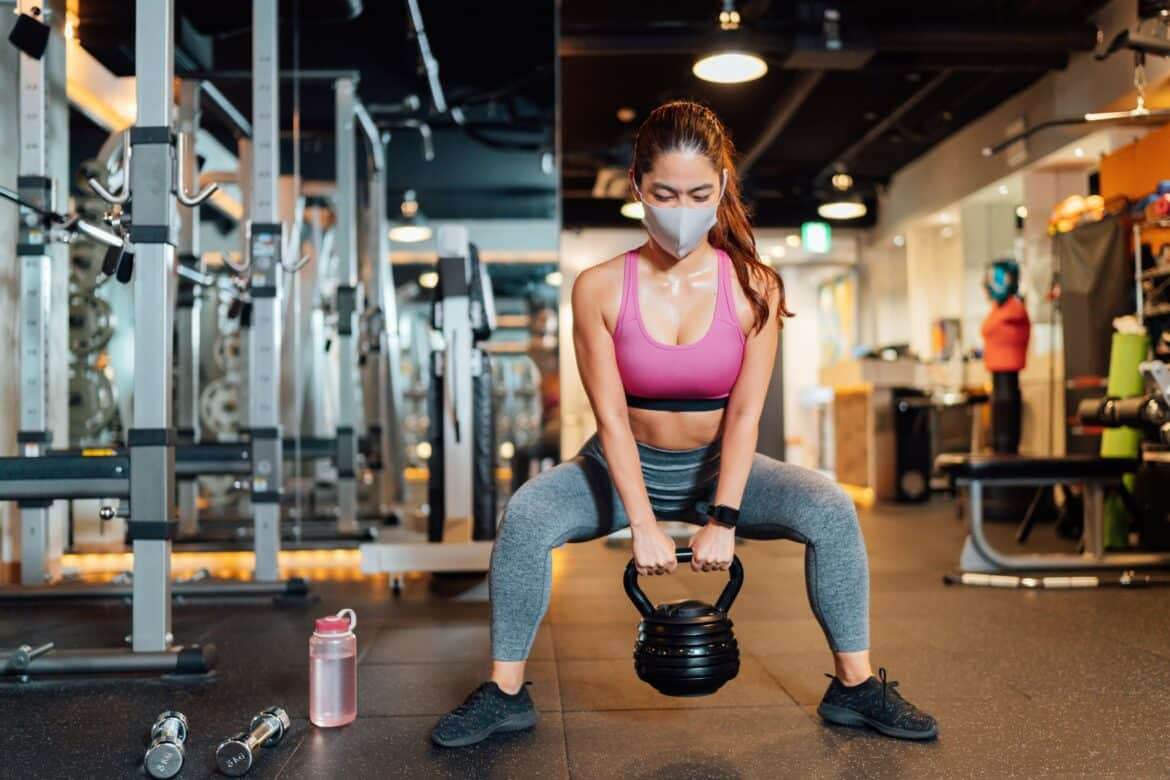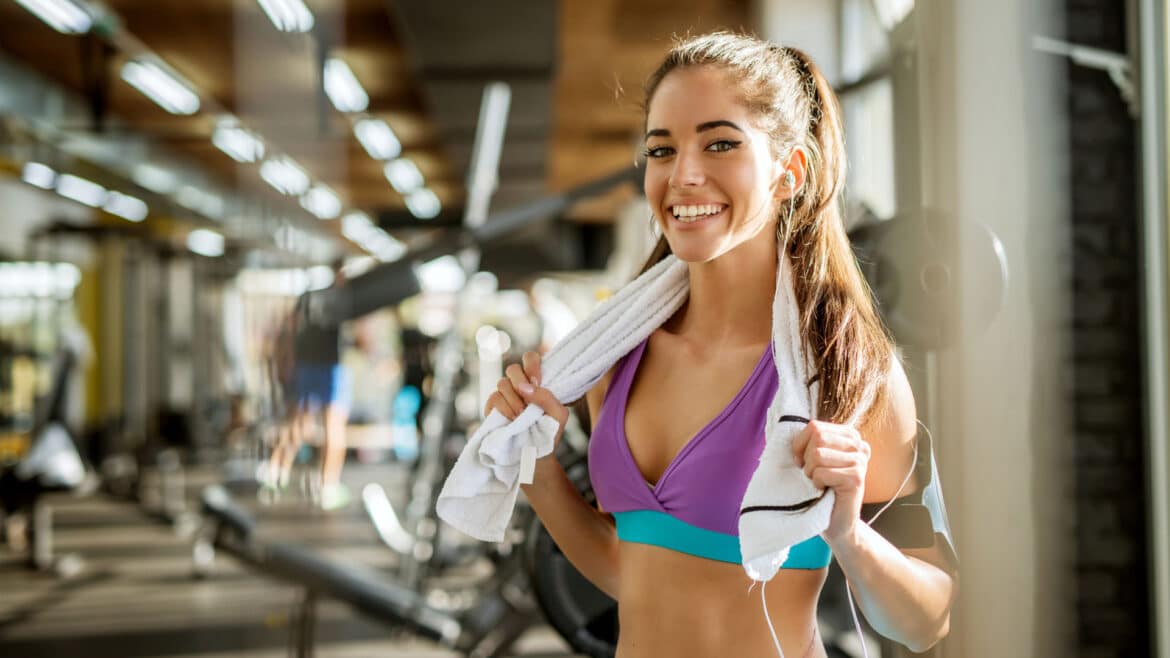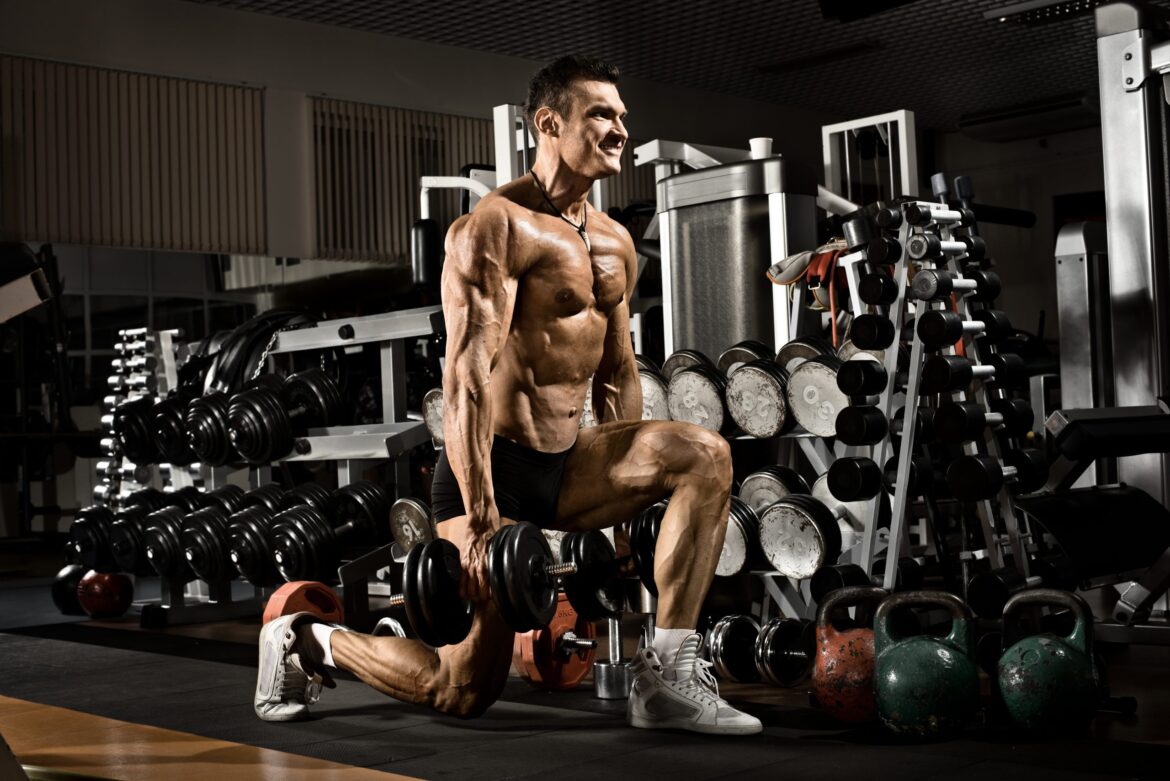Introduction What Are Gym Floors Made Of: Gym floors are typically constructed using a combination of materials that balance factors like durability, resilience, shock absorption, and aesthetics. One of the most common materials used in modern gym flooring is wood, particularly hard maple. Hard maple is preferred due to its inherent strength, even grain pattern, and shock-absorbing qualities. This type of wood is known for its resilience, allowing athletes to perform high-impact activities with reduced risk of injury. The process of crafting a gym floor involves intricate techniques to ensure uniformity and performance. Maple planks are installed in a way that minimizes seams and gaps, creating a smooth and seamless surface. The planks are then sanded, sealed, and finished with a protective layer that enhances durability and provides a consistent surface for activities. However, not all gym floors are made exclusively from wood. In some cases, engineered wood systems are employed, which consist of a layer of hardwood on top of a composite base. This design aims to balance the benefits of natural wood with enhanced stability and versatility. Beyond …
gym
Introduction What Is A Push Day Gym: A push day at the gym is a dedicated workout session focused on exercises that involve pushing movements primarily targeting the muscles of the upper body. It forms a fundamental component of many strength training and fitness routines, aiming to develop and enhance muscular strength, endurance, and overall physique. During a push day, individuals engage in a carefully curated selection of exercises designed to challenge muscles while emphasizing pushing motions against resistance. Push day workouts typically concentrate on muscles involved in pushing actions, including the chest, shoulders, and triceps. These workouts are strategically designed to complement other training days, such as pull days (which target muscles involved in pulling movements like the back and biceps) and leg days (which focus on lower body muscles). The exercises incorporated into a push day routine are chosen to effectively stimulate muscle growth and strength development. Common exercises often found in a push day workout include bench presses (flat, incline, or decline), overhead presses, push-ups, chest flies, tricep dips, and shoulder presses. These movements involve pushing weights …
Introduction Where To Sell Gym Equipment: Gym equipment is an essential part of any fitness facility, but what happens when you no longer need or want your equipment? Whether you are upgrading your gym or closing down your fitness business, knowing where to sell your gym equipment can be a challenge. Fortunately, there are several options available to help you find a new home for your used equipment. Online marketplaces are a popular choice for selling gym equipment. Websites such as eBay and Craigslist allow you to list your items for sale and connect with potential buyers in your local area. These platforms offer a wide reach and can attract a large number of interested buyers. However, it is important to note that you may have to deal with shipping or arranging for local pickup, which can be a hassle. If you prefer a more targeted approach, you can consider selling your gym equipment to other fitness businesses. Many gyms and fitness centers are constantly looking to upgrade their equipment or add new pieces to their facilities. By reaching out to …
Introduction Is It Safe To Go Back To The Gym: The gym, traditionally a place of sweat, camaraderie, and personal transformation, has undergone a transformation of its own in response to the pandemic. It’s no longer just a space to build physical strength; it’s now also a space where health-conscious individuals navigate concerns about virus transmission and personal safety. The decision to return to the gym involves a complex evaluation of individual risk factors, vaccination status, and local health regulations. This exploration delves into the multifaceted considerations that individuals are grappling with when deciding whether to venture back into the gym. From weighing the benefits of physical exercise against the potential risks of exposure to viruses, to examining the efforts made by gyms to implement safety protocols, it’s evident that this decision involves a delicate balance between personal well-being and public health. As we delve into the discussions surrounding the safety of returning to the gym, it’s essential to acknowledge the evolving nature of the situation. Guidelines, regulations, and public perception continue to shift as our understanding of the virus …
Introduction When Are Gyms Busiest: Gyms serve as spaces for individuals to pursue their fitness goals, adopt healthier lifestyles, and enhance their overall well-being. Within these vibrant environments, certain periods witness an influx of members, resulting in bustling activity and an energetic atmosphere. Understanding when gyms are busiest is crucial for those seeking to optimize their workout experience and avoid crowds. Various factors contribute to these peak times, including work schedules, human behavior patterns, and societal norms. By exploring the dynamics behind gym traffic, individuals can strategically plan their visits and make the most of their fitness journeys. The rhythmic clinking of weights, the steady hum of cardio machines, and the camaraderie among fitness enthusiasts all come together to create the dynamic ambiance of a gym. Yet, this lively setting isn’t a constant; rather, it ebbs and flows with the passage of time. Understanding when gyms are busiest is akin to deciphering the pulse of a fitness center’s daily life. These peak periods represent moments of high energy, shared determination, and the pursuit of health and fitness goals. Whether you’re …
Introduction What Machines To Use At The Gym To Lose Weight: When it comes to losing weight, hitting the gym is often the first step that comes to mind. With a wide range of machines and equipment available, it can be overwhelming to know which ones are the most effective for weight loss. However, by understanding the different types of machines and how they target different muscle groups, you can create a workout routine that maximizes calorie burn and helps you shed those extra pounds. Cardiovascular machines are a popular choice for weight loss as they get your heart rate up and burn a significant amount of calories. Treadmills, stationary bikes, and elliptical trainers are all examples of cardio machines that can help you achieve your weight loss goals. Treadmills are great for beginners as they provide a familiar walking or running motion, while stationary bikes are low-impact and ideal for those with joint issues. Elliptical trainers offer a full-body workout and are gentle on the joints, making them a versatile option for weight loss. Strength training machines are another …
Introduction What Is A Working Set Gym: A working set gym is a type of fitness facility that focuses on providing a unique and personalized workout experience for its members. Unlike traditional gyms that offer a wide range of equipment and classes, a working set gym is designed to cater to individuals who are looking for a more focused and efficient workout. At a working set gym, the emphasis is on quality over quantity. Instead of spending hours on various machines or attending multiple classes, members are encouraged to perform a series of targeted exercises that are specifically tailored to their fitness goals. This approach allows individuals to maximize their time at the gym and achieve better results in a shorter period of time. One of the key features of a working set gym job is the use of a personalized workout plan. When a member joins the gym, they are typically assigned a personal trainer who will assess their fitness level and create a customized workout plan based on their goals and abilities. This plan will include a series …
Introduction What Is A Gym Job: A gym job refers to a career or employment opportunity within a fitness facility or gymnasium. It involves working in a variety of roles and positions that contribute to the overall functioning and success of the gym. These jobs can range from front desk receptionists and personal trainers to group fitness instructors and maintenance staff. Working in a gym can be an exciting and rewarding experience for individuals who are passionate about health and fitness. It provides an opportunity to work in a dynamic and energetic environment, surrounded by like-minded individuals who share a common interest in promoting wellness and physical activity. One of the most common gym jobs is that of a personal trainer. Personal trainers are responsible for designing and implementing exercise programs for clients, as well as providing guidance and support to help them achieve their fitness goals. They may also offer nutritional advice and monitor progress through regular assessments and measurements. In addition to personal trainers gyms also employ group fitness instructors who lead classes and workouts for larger groups …
Introduction Is Opening A Gym Profitable: With the increasing focus on health and fitness, opening a gym has become an attractive business opportunity for many entrepreneurs. However, before diving into this venture, it is crucial to evaluate whether opening a gym is truly profitable. This article aims to explore the various factors that contribute to the profitability of a gym and provide insights for aspiring gym owners. Firstly, the location of the gym plays a significant role in determining its profitability. A gym situated in a densely populated area with limited competition is more likely to attract a larger customer base. Additionally, accessibility and convenience are key factors that potential gym-goers consider when choosing a fitness facility. Therefore, opening a gym in a prime location with ample parking and easy access to public transportation can greatly enhance its profitability. Secondly, the range of services and amenities offered by the gym profitable can greatly impact its profitability. While basic equipment and workout spaces are essential, offering additional services such as personal training, group classes, and specialized workout programs can attract a …
Introduction Is 4 Days A Week At The Gym Enough: With the increasing emphasis on fitness and the desire to achieve a toned and healthy body, many individuals are wondering if spending four days a week at the gym is sufficient to reach their fitness goals. While some may argue that four days a week is more than enough, others believe that additional time and effort are necessary to see significant results. In this article, we will explore the benefits and drawbacks of working out four days a week and determine if it is enough to achieve optimal fitness. Firstly, it is important to consider the individual’s fitness goals and current level of physical activity. For those who are just starting their fitness journey or have a relatively sedentary lifestyle, four days a week at the gym can be a great way to kickstart their fitness routine. Regular exercise, even if it is only for four days a week, can improve cardiovascular health, increase muscle strength, and enhance overall well-being. Additionally, dedicating specific days to exercise can help establish a routine …

